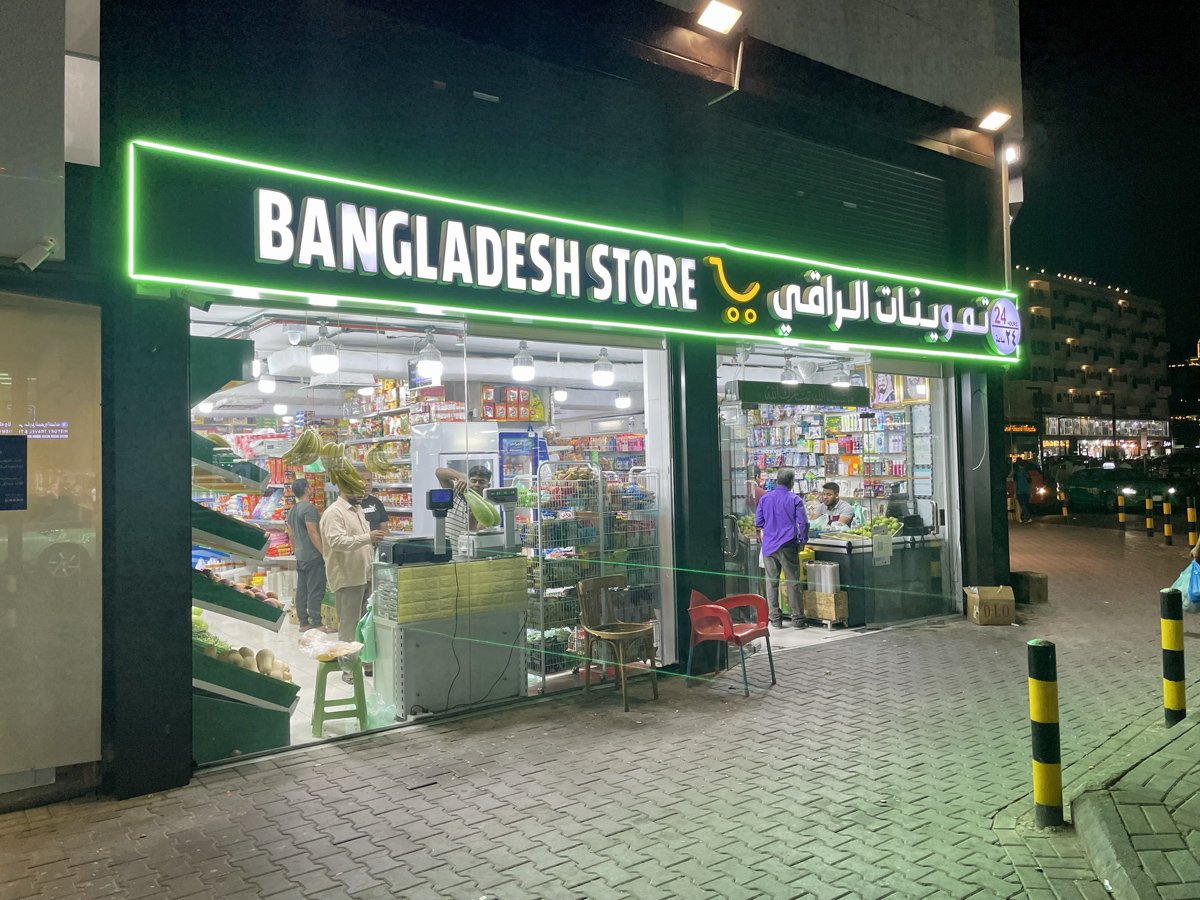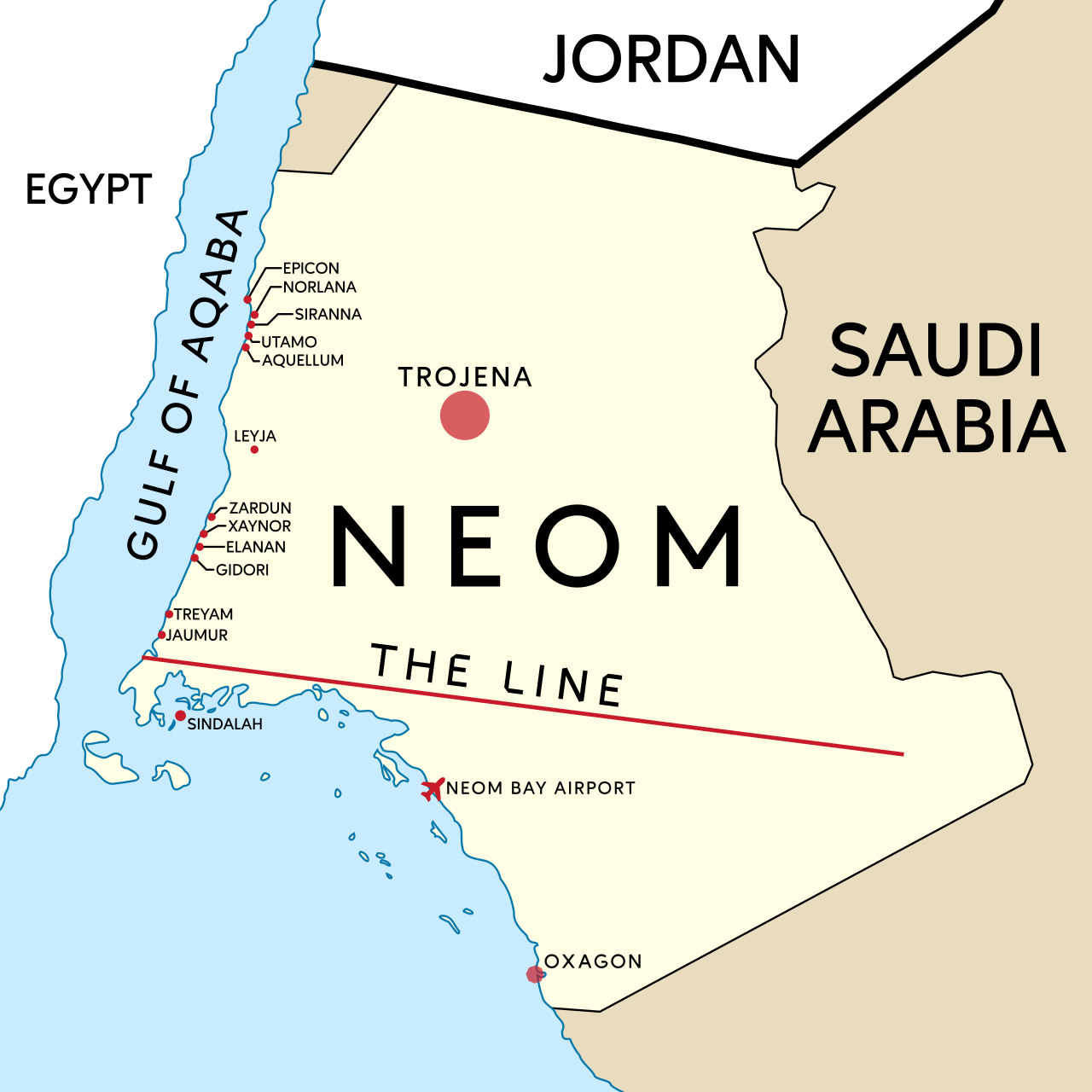Al-Ahsa Oasis
I have to admit I completely missed the 2017 diplomatic conflict between Saudi-Arabia and Qatar. What I assumed was a three-hour bus trip between Doha and Al-Hofuf turned out to be an international flight from Doha to Riyadh, followed by a two-hour train journey on the 1980s Dammam-Riyadh line.
Dammam–Riyadh line
I came to Al-Hofuf to see the Al Ahsa Oasis, which has been protected as a cultural landscape by UNESCO since 2018. With 2.5 million date palm trees, it is the largest oasis in the world. I had hoped to study the water management, but I only had one day and too little time for that. The oasis is so extensive that taxis are necessary to travel from one location to another.
Al-Qarah Mountain جَبَل ٱلْقَارَة Jabal Al-Qārah
Within the oasis is Al-Qarah Mountain, a mesa about 75 meters high with caves formed primarily by water erosion. The temperatures inside the caves are quite pleasant, which is why they have been inhabited since ancient times. Now, the caves have been turned into a tourist attraction called The Land of Civilisation, and I was the only visitor that morning.
Before entering the caves, I purchased some dates for breakfast. I love the practice of replacing the pits with almonds. While I was never a big fan of dates, after tasting them in Saudi Arabia, I have become a fan—you just need to buy quality dates.
Entrance to the caves.
People inside Al-Qarah Mountain, 1924 A.D.
Before entering the caves, I was led through a small exhibition about the history of Islam. This is Saudi Arabia flexing its soft power muscle. The host spoke perfect English, and at the end of the tour, I was handed a bag with some gifts: two paper cups of Arabic coffee and dates (which came in handy as breakfast in my hotel room), an English translation of the Quran, and some Vision 2030 leaflets.
Al Khalifa Heritage Museum متحف الخليفة التراثي
Once upon a time, the oasis was the only place in Saudi Arabia where rice was grown. However, in 1938, petroleum was discovered near Dammam. Today, the largest oil field, the Ghawar Field, is located in the Al-Ahsa Governorate, leading to the region's rapid modernization. The tiny Al Khalifa Heritage Museum serves as a testament to that process, and I was the only visitor that day.
The oasis boasts a total of 2.5 million date palm trees, and I learned that the date farms are privately owned, with a total production of 100,000 tons of dates per year. After visiting Al-Qarah Mountain and the heritage museum, I spent the rest of the day wandering through the date farms. Those palm trees are quite beautiful.
Source: Analyzing the Spatial Correspondence between Different Date Fruit Cultivars and Farms’ Cultivated Areas, Case Study: Al-Ahsa Oasis, Kingdom of Saudi Arabia. https://www.mdpi.com/2076-3417/12/11/5728
I had planned to get a haircut during my trip, but the choice of barber turned out to be quite random. I took a taxi ride to a كبسة kabsah restaurant, only to find it was takeout only. As I started walking and feeling a bit lost, I passed a barber shop. Without thinking, I walked in and discovered that they didn't speak English or Arabic—they were Turkish.
I did understand that they were advising me to dye my graying beard black, and from that moment on, I simply nodded at every suggestion they made. The whole process took an hour and a half, and at one point, I even looked like a smurf! I paid 100 riyals, which wasn't too bad for the amount of time they spent on me.
Planes, Trains and Automobiles
This was not my most environmentally friendly journey. To get from Al-Hofuf to Jeddah, I had to backtrack by train to Riyadh and then choose between a 14-hour bus ride or a one-and-a-half-hour flight. Naturally, the train station is located in the south of Riyadh, while the airport is in the north, so I had to take a 50-kilometer taxi ride once again. Nonetheless, I reached my hotel in Jeddah before 4 PM the same day.
EMD SD50 diesel locomotive on the Dammam–Riyadh line. The line was opened. in 1981. There is also a second Dammam–Riyadh line via Haradh, which is only used for freight.

































































































